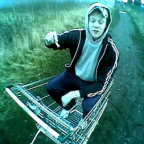As my piece was improvised, I did not know what to expect from the final performance. Although, I did not want any verbal responses from the audience members I selected to be on stage, I needed some physical reaction to what if said and did to help guide the tone of each character.
The audience members chosen after the performance said they were relaxed and enjoyed being part of a show they came to watch. This was important as the relationships I wanted to portray were not predetermined as I wanted them to form naturally. If they were closed off and awkward I believe it would not have as natural and open feel to it.
I think once in each individual slot there was a clear distinction between each character and the difference between the relationships formed between the audience members on stage and those looking on. In the first spot light I unexpectedly built up two relationships. Firstly, the audience member in the first spot did not know what their role would entail as they were the first to be used. Secondly, I initially intended to form additional characters in the scene with just my speech and physicality but, the man in the second spotlight was sat in an opportune place to direct a lot of the dialogue to. If I was to perform STUCK again I would include the audience member stood behind the trolley in the interactions as much as I did the other audience members in the other spots. This would have helped with structure as well as adding clarity to the tone of the spot.
As the piece turned out to be funnier than intended, some of the more serious notes seemed to be diluted as a performer. Despite this, feedback from the audience suggests that the themes were so interesting, engaging and relatable because of the humour. The archetypal characters I wanted to portray made each section more accessible as oppose to a complex mysterious issue.
Due to the piece being improvised certain speech and topics found in rehearsals were left out or skimmed over. This is a little frustrating as they could have added different aspects to the piece. On the other hand, other things were found and arose throughout the performance that were not expected but still added the detail that the subjects lost from rehearsals could have. For that reason, if I were to do it again I would still improvise the piece allowing it to continue to grow and adapt to different audiences at different times.
Before performing my show I saw it as a small piece with a gentle heart and a simple question to the audience ‘what is it to be male?’ Whilst performing and since I have seen how I can extend the piece with additional characters as well as further marks I can reach throughout each spot. With these additional characters and new subject matters, I would find ways of linking each of the characters together resulting in a fuller and more extensive piece.
Other Performances
I tried to watch as many people’s pieces as possible, which gratefully being one of the first to perform enabled me to do. As I watched the performances I tried to watch as an audience member concentrating on the piece as a whole. Despite this, I could not help but respond to the structures people used in their performances. I believe the more successful pieces had the clearest structure without being too systematic.
Jake Robinson showed a clear and strong structure. It was simple but effective. He used techniques used by the late Spalding Gray both in his content and his lighting. He started with a hook and ended with the same hook showing a clear beginning and ending. In between he set up the context to stories and described characters he came across similar to Gray. When he became the characters he used separate spotlights to distinguish himself from the characters. This allowed the audience to focus on the content, making the piece more engaging.
Although the majority of concepts challenge in this year’s solo performance were very interesting, some of the execution was not as strong. I think this can be a big problem with solo performance because you create, devise and direct everything yourself with little feedback and guidance. It is hard to be objective about what you are doing as distancing yourself can be almost impossible. With a director or a frequent second pair of eyes, the less strong performances would have been improved vastly. On the other hand, the first solo performers had little experience in theatre and were just as successful.
As a result, I love solo performances and find them as insightful and fulfilling to watch and perform as a full length company play. In a creative process people always needed guidance, so despite being on stage on your own I feel it is always better to have one or several other people involved.

